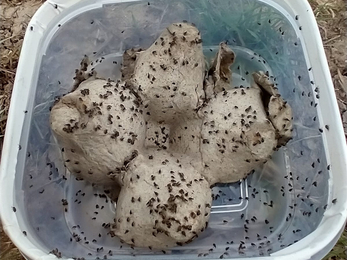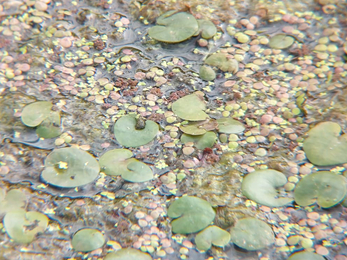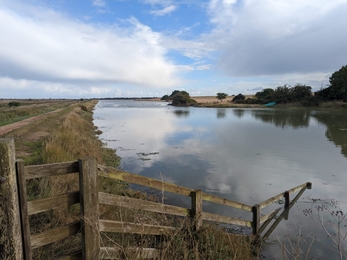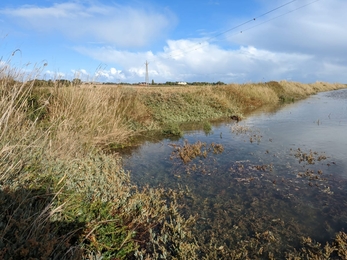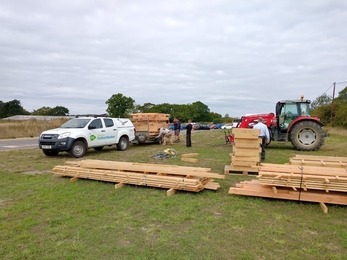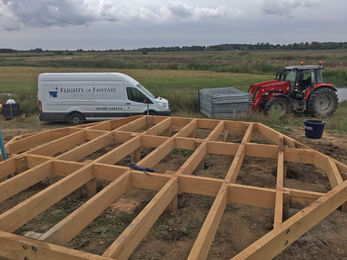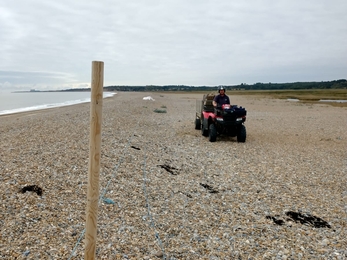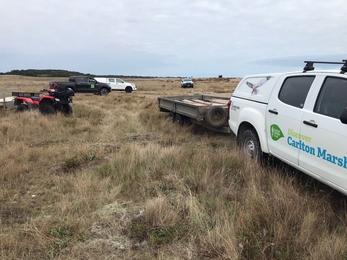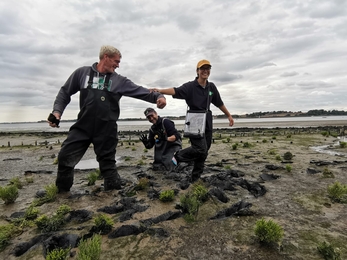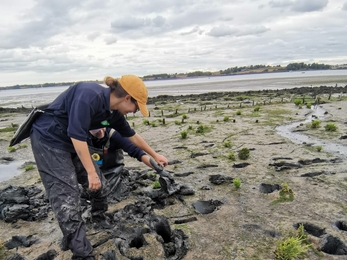Weekly wild news from our reserves - 23 September 2022
Sea aster – Jamie Smith
This is not an alternative lunch recipe, but a box of azolla weevils to do a very important job on the marshes. Warden Lewis Yates has been releasing these weevils at Carlton Marshes and Castle Marshes this week, as both marshes had an infestation of the non-native water fern Azolla filiculoides. Azolla fern spreads quickly and forms thick mats across dykes and ponds. The invasive fern negatively affects the wetland by blocking out light and increasing nutrients, which in turn impacts upon rare aquatic plants, snails and fen raft spiders on the reserve. The azolla weevils will set to work eating the azolla fern, eventually leaving a healthy dyke with green duck weed instead. The weevils usually die out naturally once they have consumed all the water fern, so eradicate the fern without the need for dredging or chemical treatment.
Azolla varies in colour from red to green depending on the season, and in the photo below it appears as the darker red blobs. The pale red and green leaves are duckweed, and the larger green leaves are frogbit.
Wall brown
Warden Andy Hickinbotham happily snapped this third-generation female wall brown butterfly in the barn garden at Lound Lakes reserve this week. The wall brown is a medium-sized butterfly which is on the wing in two or three broods, between the middle of April and the end of October. It is a widespread, but declining, butterfly of hot, sunny places such as open grassland, sand dunes and rocky foreshores, disused quarries and railway cuttings, and gardens. Their caterpillars feed on a variety of grasses including false broom and tor-grass.
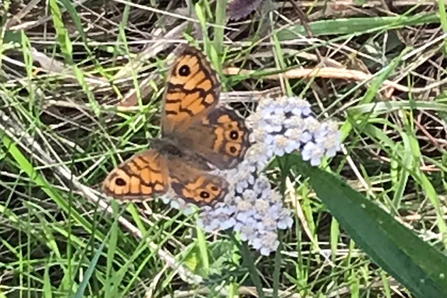
Wall brown in Fen Barn Garden at Lound Lakes – Andy Hickinbotham
Sea aster
Sea aster is currently flowering at Hen Reedbeds. It’s a classic salt-loving plant which is found on many saltmarshes and estuaries across Suffolk. It’s also known as ‘summer’s farewell’ due to its late flowering, which also makes it a vital source of autumn pollen for many insects.
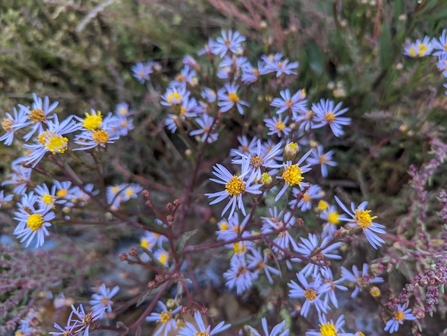
Sea aster – Jamie Smith
New home for barn owls at Trimley Marshes
Warden Joe Underwood and his trusty volunteers put up this new barn owl box at Trimley Marshes this week. The box overlooks prime vole habitat and should provide a safe breeding refuge for barn owls over the coming years. Barn owl populations have recovered in Suffolk due to partnership conservation efforts, including landowner advice encouraging rough grassland strips and plenty of boxes being fitted across the county over the past 15 years. Barn owl boxes provide essential nesting sites due to the lack of old hollow trees or traditional barns which the owls once inhabited. A big thank you to dedicated volunteer Peter and his team for their expertise in installing the box.
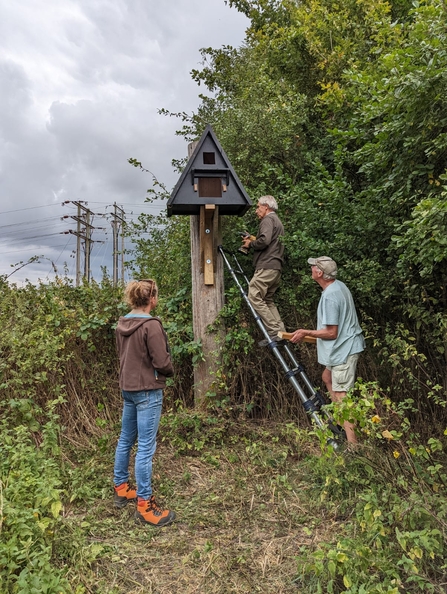
New barn owl box at Trimley Marshes – Joe Underwood
Spring tide checks
Last Friday a spring tide was forecast - these extra high tides occur three or four times a year when moon is new or full, and the sun, moon and earth are aligned. These high tides mean additional work for warden Jamie Smith, as he needs to check our estuary reserves for damage or flooding from the high water levels. Thankfully, this time Hen Reedbeds and Dingle Marshes went unscathed.
Reedbed explorers
It’s hard to tell but there are eight cows deep in this jungle of reeds at Hen Reedbeds, watch the clip below to see one emerge. There’s plenty to munch on for these intrepid explorers!
New views
Two new viewpoints are being installed at Carlton Marshes, thanks to generous funding by the Green Recovery Fund. The viewpoints will give wonderful views, helping visitors have an even closer wildlife experience. The hides will be starting to appear at Carlton over the next three weeks, so watch this space!
Tremendous teamwork
Teamwork was in full swing at Dingle Marshes this week, when five Suffolk Wildlife Trust wardens got together with RSPB wardens and Natural England to remove the temporary fencing which has been vital in protecting ground nesting birds along the shingle coast. Many hands made light work!
Stuck in the mud!
The South East Suffolk team got well and truly ‘stuck in’ during saltmarsh monitoring this week! The team have been monitoring saltmarsh habitat along the River Orwell next to Levington Lagoon nature reserve. Since 2014, sediments from Suffolk Yacht Harbour dredging operations have been piped onto the fragile saltmarsh habitat to prevent further habitat fragmentation and loss. Between 15,000 and 20,000m3 of silt is dredged each year within the harbour. This project is an ongoing partnership between Suffolk Wildlife Trust, Suffolk Yacht Harbour and saltmarsh expert Simon Read. Monitoring has shown positive results, with good recovery of the saltmarsh habitat and increased soil accretion over significant areas, although at the outer extremes the rapid erosion continues with wave energy fragmenting the lower terraces. This monitoring work will help shape the format of the next stages of habitat restoration work, which makes all the sliding around in soft mud worthwhile (the missing welly was safely retrieved)!
Saltmarshes support a wealth of wildlife and are vital habitats for a variety of wetland birds including many wading species such as redshank, curlew, dunlin, lapwing and golden plover. Redshank still breed on saltmarshes where the levels are higher than mean high water. For other species, the intricate structure and vegetated surface projecting out into estuaries makes these habitats key roosting locations for huge numbers of wetland birds at times of high tide. Saltmarshes are also important nursery areas for juvenile fish species and hugely important carbon stores which could help towards reversing climate change.


